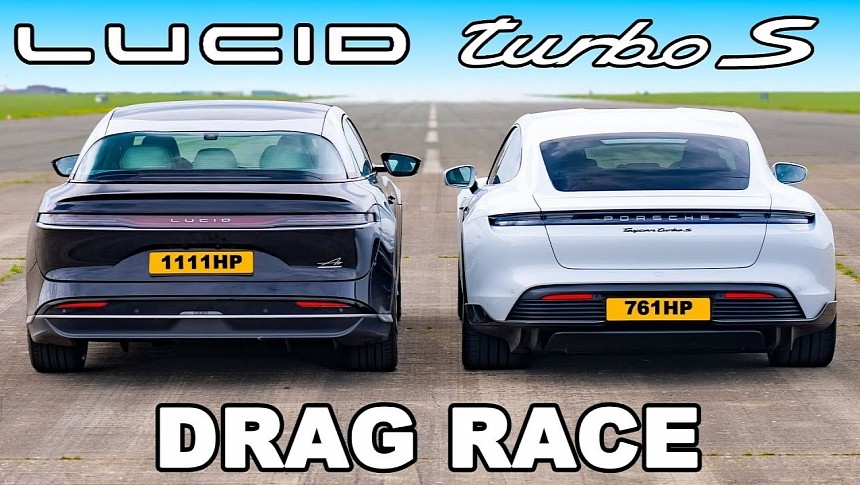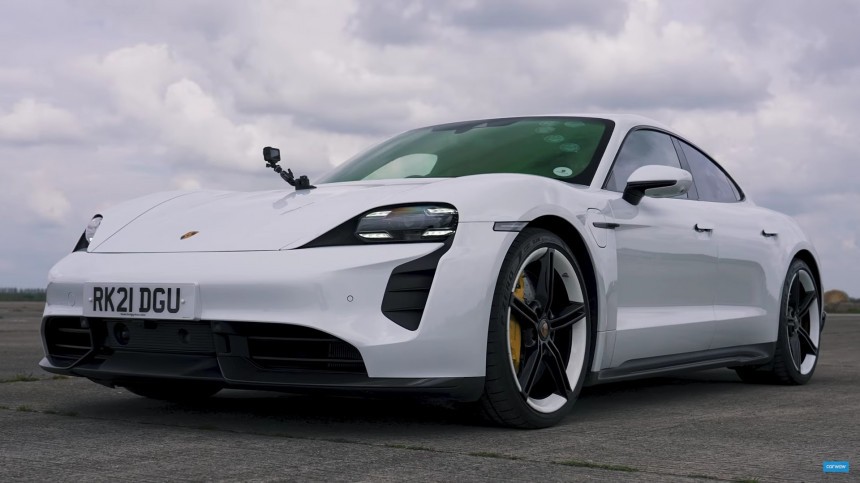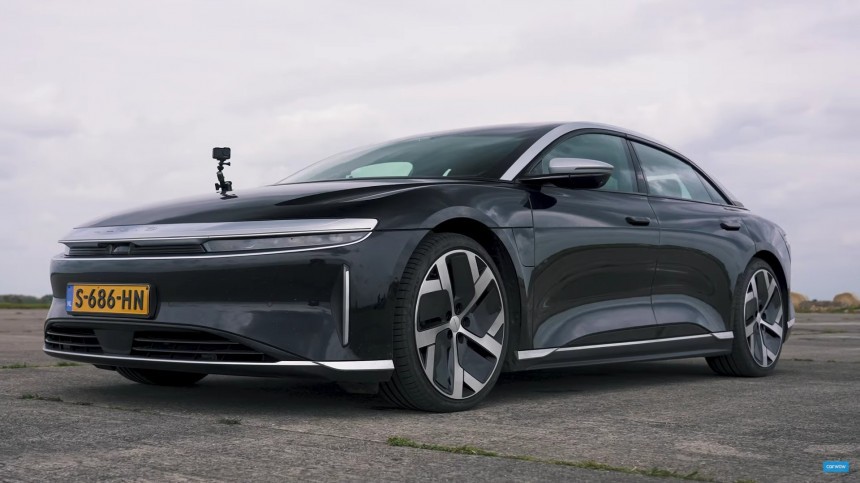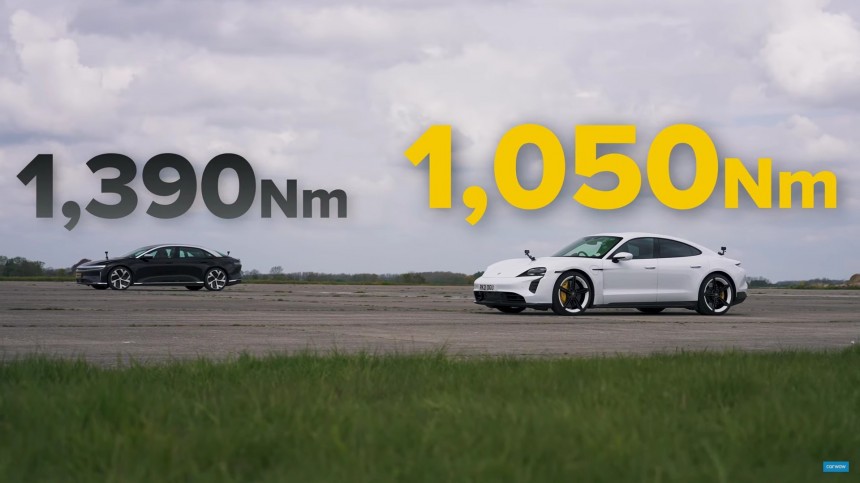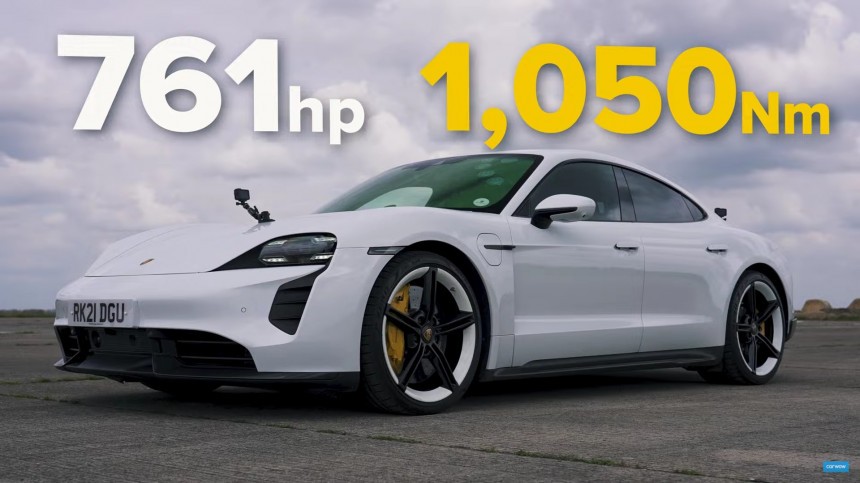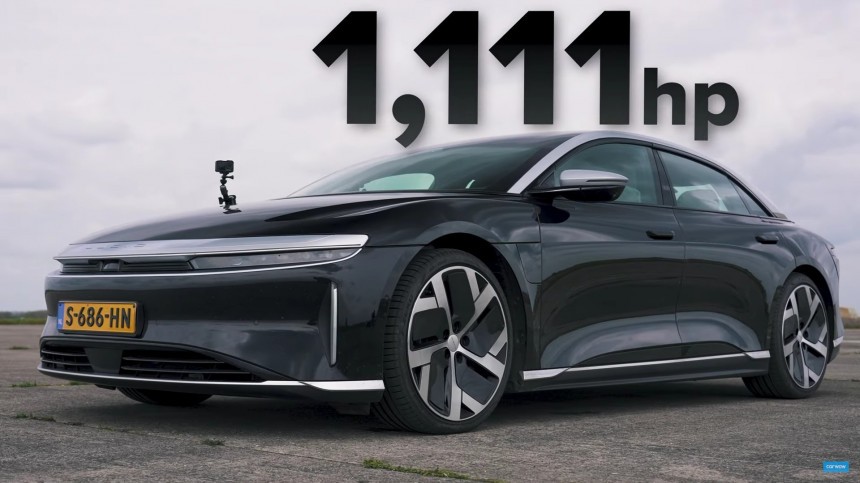Horsepower wars have never ended – there was just a temporary cease-fire on the grounds that big V8s were harmful to the environment. But have you noticed that no one bats an eye to the ever-increasing power outputs of electric cars nowadays? Granted, no vicious gases come out of the tailpipes of EVs, but the electricity doesn't rain down from heaven. On second thought, thunderstorms are precisely that - a downpour of electricity – but that's utterly useless, with no practical way of capturing and storing it.
The point is that the current power paradigm is not surrounded by a similar level of tension (yes, PUN intended) as combustion engine transportation is nowadays debated with a fiery passion (guilty of PUN in the second degree, too).
The compromise lies in the choice lawmakers have to make in deciding what is ultimately more harmful: the oil industry – represented by the demonic piston-and-crankshaft worshippers – or the electric battery pack supply chain – backed by woke motorists with the hippie automotive idea(l)s?
Not to be misinterpreted, I do not advocate either side (nor do I find myself tangled in mobility conundrums revolving around oxcarts and camel caravans). I enjoy a good car just as much as the next person – I don't fancy the plastic manifestations of today's motoring. Still, life is such, and we must bow to evolution.
Then again, some things have reached a growth peak, and there is nothing else beyond that. Take motorsports, for example: regardless of what type of energy source is used for getting across the line faster than the other guy, the kick is very much the same as it was a century and a quarter ago.
Of course, progress – in technology and mentality – has enabled humanity to expand its once-fantasy aspirations into an ever-present reality. Cars are widely available to the masses, and so is high-performance tuning. The latter has become so affordable that it doesn't take an arm and a leg to get a regular car to a thrilling level of performance.
The simplest, purest form of quantifying the increase in motoring ability is the genius invention known worldwide as "drag racing." But this, too, is segregated into many categories – and electric cars generally bet the carbon dioxide out of anyone over the quarter mile.
Because that's what they do: point out the flaws and imperfections we grew to love about classic automobiles that leave toxic fumes trails in their wake. Ever since electric carmakers have been admitted to the high tables of automotive, things have changed fast. Or should I say more quickly because electricity only bows to electricity similarly; only a diamond can cut another diamond?
Please don't take my word for granted, but take a peak at the video attached to this story and see what I mean. We already have established – time and time again, with scientific endeavor – that EVs are fast in a drag race. We won't go into the details, but certain gearheads do. Take Mat Watson, the YouTubing vlogger with a knack for speed.
He never passes down an opportunity to take the wheel of an (electric) automobile and punch it over quarter-mile-sanctioned sections of an English airfield. He has a guest of honor this time – and I'm not referring to his co-host. A Lucid Air is the main star in the latest video episode of this never-ending "Which is quickest?" saga.
Although still uncertain about its mass-produced existence, the Lucid is not giving in to rumors, haters, knell-ringers, and detractors. Once in a while, a real Lucid reminds everyone that there's more to EVs than Tesla. (Not to take away any of Rimac Nevera's latest record-setting feat, but multi-million-dollar hypercars don't mingle with just any electron-eater).
There we have it: a unicorn that's been in the promise for a little too long takes on a low-profile production car that lives by the creed "power is only as good as you can use it:" a Porsche Taycan Turbo S.
The misleading oddity In its nameplate - the "turbo" – is to express performance while simultaneously taking a reverence toward a glorious achievement of the automobile history. But the Taycan is as electric as lightning (which, in turn, draws inspiration from "light"… syntax is sometimes as friendly as crooked driveshaft).
In good, old-fashioned Porsche tradition, the Taycan isn't the most powerful electric car available on the market, nor the lightest. But it is fast – something the Germans from Stuttgart have honed over decades of continuous improvement – and punches way above its weight. About this last attribute – 2.3 tons is the body-mass index of the Taycan Turbo S.
Then again, aren't all electric cars vastly overweight compared to their ICE-age ancestors? To make matters worse for the Porsche, the power output is half what the contender brings: 460 kW (616 hp / 625 PS) and 560 kW (750/761 PS), available only with Launch Control.
The dual motors' combined torque output is 774 lb-ft (1,050 Nm), vectored to each wheel on the rear axle. Also, a two-speed automatic transmission is mounted between the rear asynchronous motor and its corresponding wheels.
The exclusive – and somewhat elusive – Lucid Air is on a whole different level of performance: 1,111 hp (1,126 PS) and 1,025 lb-ft (1,390 Nm), also driving all four wheels. A bit heavier than the Taycan, but not by that much to make a power-to-weight difference. Just under 2.4 tons (roughly 200 lbs more than the Porsche) and up to 500 more hp (depending on what math is applied – cruise or launch control power).
The Taycan takes a definitive win over the Lucid in terms of popularity. In the first quarter of 2023, Porsche delivered 6.5 times more all-electric Taycans than Lucid did Airs (9,152 over 1,406). Porsche sold more BEVs in the first three months of this year than Lucid managed to push out of its showrooms in 2022 (the American company sold 7,180 automobiles last year).
But this is a contest of speed, not market share, and the Lucid – with its undisputed motor authority – wins all racers, bar the inaugural (but we can blame the driver's reaction times). The best quarter-mile score was a 10.3-seconds for the Air, just two-tenths ahead of the Taycan. Despite the better off-the-line bursts, the Porsche has a massive – and non-compensable – disadvantage. That's not to say it doesn't hold its own, but it can't hold a candle to the horsepower-armed-to-the-teeth American.
The compromise lies in the choice lawmakers have to make in deciding what is ultimately more harmful: the oil industry – represented by the demonic piston-and-crankshaft worshippers – or the electric battery pack supply chain – backed by woke motorists with the hippie automotive idea(l)s?
Not to be misinterpreted, I do not advocate either side (nor do I find myself tangled in mobility conundrums revolving around oxcarts and camel caravans). I enjoy a good car just as much as the next person – I don't fancy the plastic manifestations of today's motoring. Still, life is such, and we must bow to evolution.
Of course, progress – in technology and mentality – has enabled humanity to expand its once-fantasy aspirations into an ever-present reality. Cars are widely available to the masses, and so is high-performance tuning. The latter has become so affordable that it doesn't take an arm and a leg to get a regular car to a thrilling level of performance.
The simplest, purest form of quantifying the increase in motoring ability is the genius invention known worldwide as "drag racing." But this, too, is segregated into many categories – and electric cars generally bet the carbon dioxide out of anyone over the quarter mile.
Please don't take my word for granted, but take a peak at the video attached to this story and see what I mean. We already have established – time and time again, with scientific endeavor – that EVs are fast in a drag race. We won't go into the details, but certain gearheads do. Take Mat Watson, the YouTubing vlogger with a knack for speed.
He never passes down an opportunity to take the wheel of an (electric) automobile and punch it over quarter-mile-sanctioned sections of an English airfield. He has a guest of honor this time – and I'm not referring to his co-host. A Lucid Air is the main star in the latest video episode of this never-ending "Which is quickest?" saga.
There we have it: a unicorn that's been in the promise for a little too long takes on a low-profile production car that lives by the creed "power is only as good as you can use it:" a Porsche Taycan Turbo S.
The misleading oddity In its nameplate - the "turbo" – is to express performance while simultaneously taking a reverence toward a glorious achievement of the automobile history. But the Taycan is as electric as lightning (which, in turn, draws inspiration from "light"… syntax is sometimes as friendly as crooked driveshaft).
Then again, aren't all electric cars vastly overweight compared to their ICE-age ancestors? To make matters worse for the Porsche, the power output is half what the contender brings: 460 kW (616 hp / 625 PS) and 560 kW (750/761 PS), available only with Launch Control.
The dual motors' combined torque output is 774 lb-ft (1,050 Nm), vectored to each wheel on the rear axle. Also, a two-speed automatic transmission is mounted between the rear asynchronous motor and its corresponding wheels.
The Taycan takes a definitive win over the Lucid in terms of popularity. In the first quarter of 2023, Porsche delivered 6.5 times more all-electric Taycans than Lucid did Airs (9,152 over 1,406). Porsche sold more BEVs in the first three months of this year than Lucid managed to push out of its showrooms in 2022 (the American company sold 7,180 automobiles last year).
But this is a contest of speed, not market share, and the Lucid – with its undisputed motor authority – wins all racers, bar the inaugural (but we can blame the driver's reaction times). The best quarter-mile score was a 10.3-seconds for the Air, just two-tenths ahead of the Taycan. Despite the better off-the-line bursts, the Porsche has a massive – and non-compensable – disadvantage. That's not to say it doesn't hold its own, but it can't hold a candle to the horsepower-armed-to-the-teeth American.
